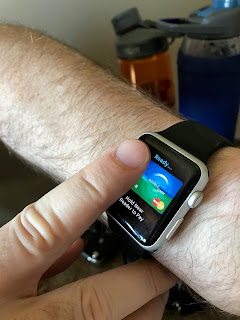In Robert Heinlein’s SF novel Revolt in 2100, American society fallen under the rule of a rigid theocracy. The protagonist is introduced in the following passage…
It was cold on the rampart. I slapped my numbed hands together, then stopped hastily for fear of disturbing the Prophet. My post that night was just outside his personal apartments-a post that I had won by taking more than usual care to be neat and smart at guard mount . . . but I had no wish to call attention to myself now.
I was young then and not too bright-a legate fresh out of West Point, and a guardsman in the Angels of the Lord, the personal guard of the Prophet Incarnate. At birth my mother had consecrated me to the Church and at eighteen my Uncle Absolom, a senior lay censor, had prayed an appointment to the Military Academy for me from the Council of Elders.
Uncle Absolom: a senior lay censor…In the real America in 2017, ‘censor’ is no longer a role restricted to the pages of science fiction novels or to a limited military activity in time of war, but is rather becoming a mainstream occupation, and a fast-growing one.
Facebook, for example, is hiring 3000 people to add to its existing 4500 on the team “reviewing posts with hate speech, crimes, and other harming posts.” (The illiterate phrasing of the preceding sentence was evidently perpetrated by the professional journalists at TechCrunch, not by FB itself) YouTube (owned by Google) also employs many people to review videos which are believed to be inappropriate or worse. There are also programmers and system designers employed in creating and tuning software to facilitate the censorship function, and there are actually startups focused on this area.
It has often been observed that the number of college administrators is growing much faster than the numbers of college faculty. A nontrivial number of these are engaged in what are basically censorship functions. Even in business, the censorship of wrongspeech has become a major function of Human Resources and a consumer of management time.
There are also plenty of volunteer censors, eager to report people of whose speech they disapprove and get them fired or instigate mob action against them…for example, Lena Dunham, who sent the following Instagram message directed to airline travelers (and possibly flight crews as well)..
I’m at the airport. And I think people now know, when I’m at the airport, they have to f—ing watch out for me, because I hear and I see all.
There are multiple reasons for the censorship boom: (1) With social media, communications that were once private are now semipublic and mediated by the social media company (2) Content that was once created and distributed by a relatively small number of media companies..who in effect conducted their own internal censorship process…is now created by a much larger number of individuals and distributed via social media, especially Twitter (3) Many of the previously-generally-accepted standards of behavior and speech have eroded (4) There appears to be growing hostility toward free speech, driven partly but not entirely by academic theorists (5) There are a lot of people who are just plain sadists and bullies, and shutting other people down gives them pleasure. Social media gives them new scope for this activity.
With regard to (1), the social media companies…especially FB…really do have a dilemma. There is an obvious public interest in preventing the dissemination of terrorist propaganda and operational plans, and an obvious human interest in responding to desperate cries for help, as with the suicides that were pre-announced on Facebook. And the semipublic nature of FB communications implies that individual and group posts can have an impact on FB’s brand, whereas phone conversations and emails would have no such impact on the brand of the carrier involved. Meanwhile, the Leftist orientation of most of these companies, combined with Silicon Valley groupthink, does not tend toward policies that are particularly supportive of free speech.
With regard to (5), I am reminded of a passage in Goethe’s Faust….Gretchen, after finding that she is pregnant by Faust, is talking with her awful friend Lieschen, who (still unaware of Gretchen’s situation) is licking her chops about the prospect of humiliating another girl (Barbara) who has also become pregnant outside of marriage. Here’s Gretchen, reflecting on her own past complicity in such viciousness:
How readily I used to blame
Some poor young soul that came to shame!
Never found sharp enough words like pins
To stick into other people’s sins
Black as it seemed, I tarred it to boot
And never black enough to suit
Would cross myself, exclaim and preen
Now I myself am bared to sin!
There’s a lot of this…”sharp enough words like pins to stick in other people’s sins”, combined with the pleasure of preening…in the amateur censors of our day. And the amateur censors often operate by activating the professional censors.
See also my post Freedom, the Village, and the Internet.
